Most poker coaches like to talk about the steps that you need to take to move up in stakes. But what if you’re moving down in stakes? It doesn’t necessarily have to be because of a downswing. For instance, three weeks ago I didn’t feel like flying all the way to Choctaw to play a WPT. Instead, I played a $350 tournament with six day ones and a $500K guarantee at the Hard Rock in Hollywood, Florida. After playing $1,500+ events all summer at the WSOP, I had some difficulty adjusting to stakes.
It took me longer than it should have to realize that my opponents were folding too often from the blinds. Higher stakes players know proper blind defense ranges very well. If anything, they defend against steals TOO often. Small stakes players have zero comprehension of minimum defense frequency. As a result, I should have adjusted by widening my opening ranges beyond the boundaries that game theory would suggest.
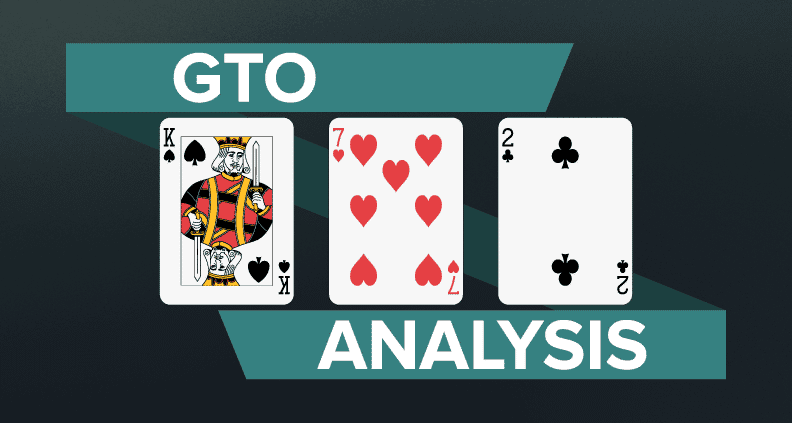
Even if the blinds adjusted by defending more often, I doubt that they could’ve overcome my post-flop skill edge. This leads to my next point. Small stakes players fold way too often on dry boards. Here’s a little experiment you should try. Walk up to a random table and ask everyone how often Villain needs to fold to a half-pot bet in order for Hero to bluff profitably with any two cards. The correct answer is 33%. Few, if any, of them will answer correctly. I’ve asked the last 30 students I’ve coached and only 2 of them knew the answer.
If someone answers correctly, take this experiment a step further and ask him how often Villain needs to defend against a half-pot bet to prevent Hero from bluffing profitably with any two cards. The correct answer is 67%. Nobody will answer this correctly. Nobody. Even if you miraculously find someone that can answer these two questions, I guarantee he doesn’t know how to implement a strategy using these two numbers.
Let’s say Hero is in the early stages of a tournament. The blinds are 100/200. Effective stacks are 20K. Hero opens the button to 600. Hero is opening a game theory optimal range of 35.1%. Villain is defending by calling with a game theory optimal range of 24.6% of hands. The flop is
K♠ 7♥ 2♣
Villain checks. Hero bets 650. Villain needs to check-call about 67% of the time. But what does that range look like?
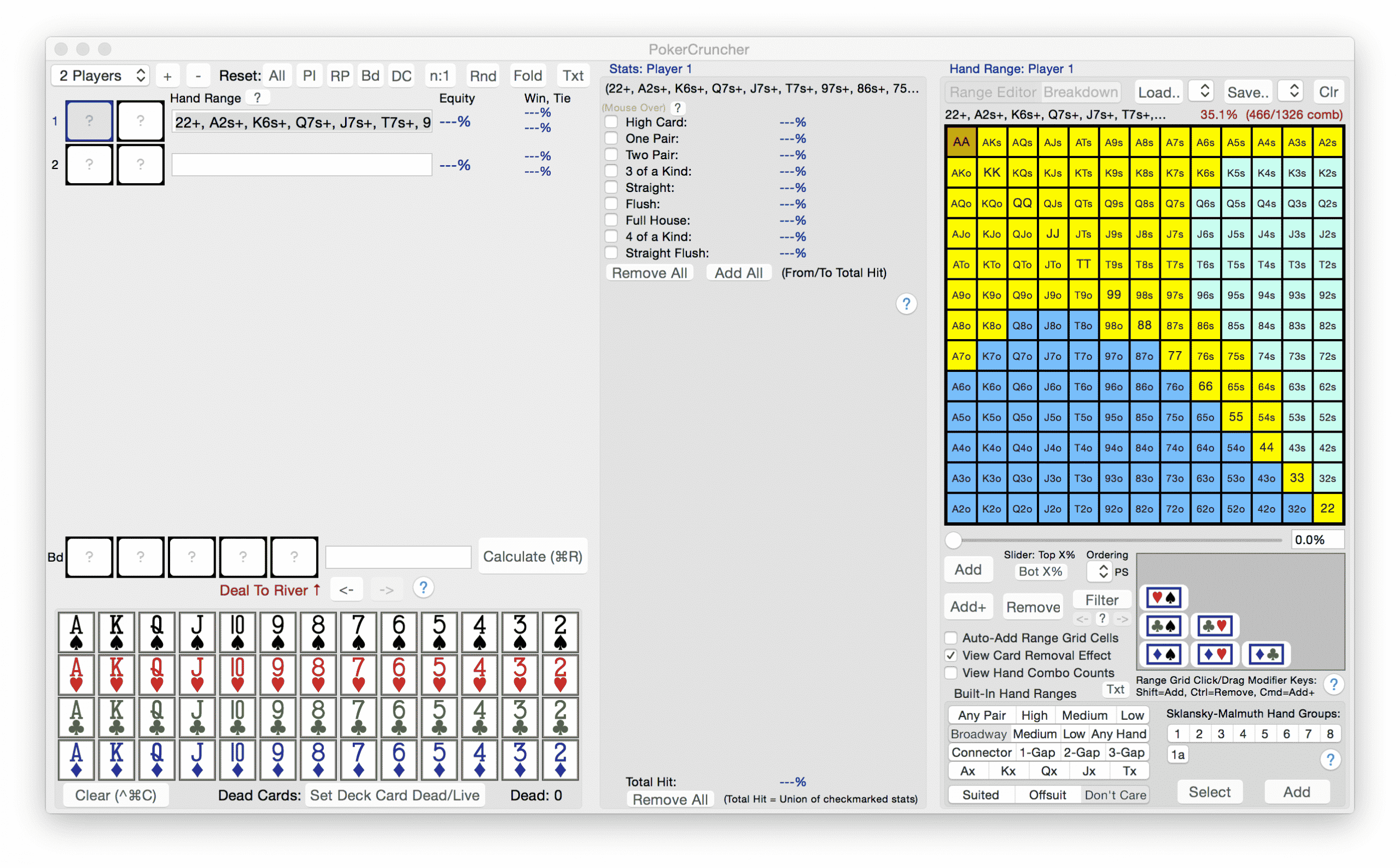
*Hero’s button opening range
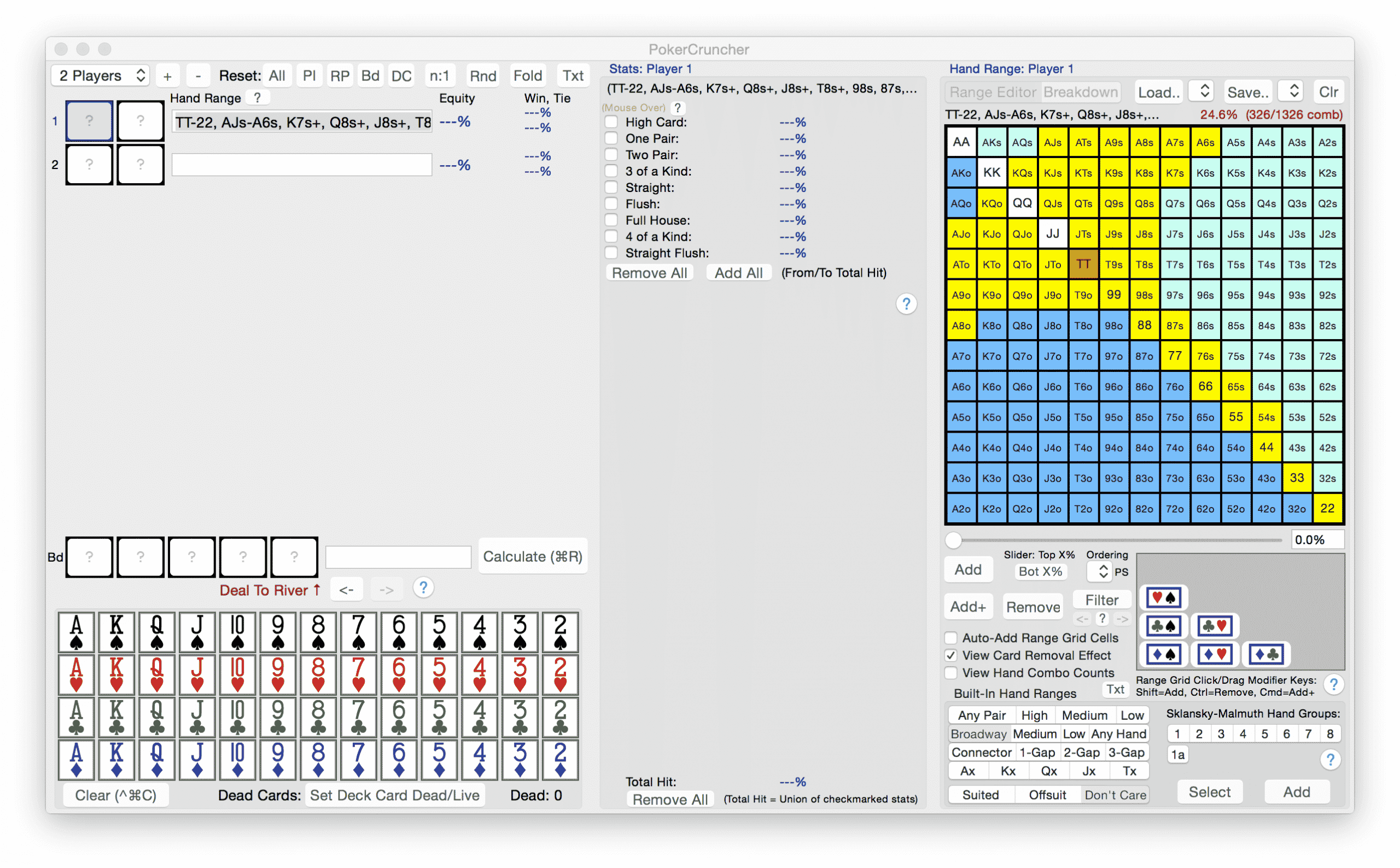
*Villain’s big blind defense range
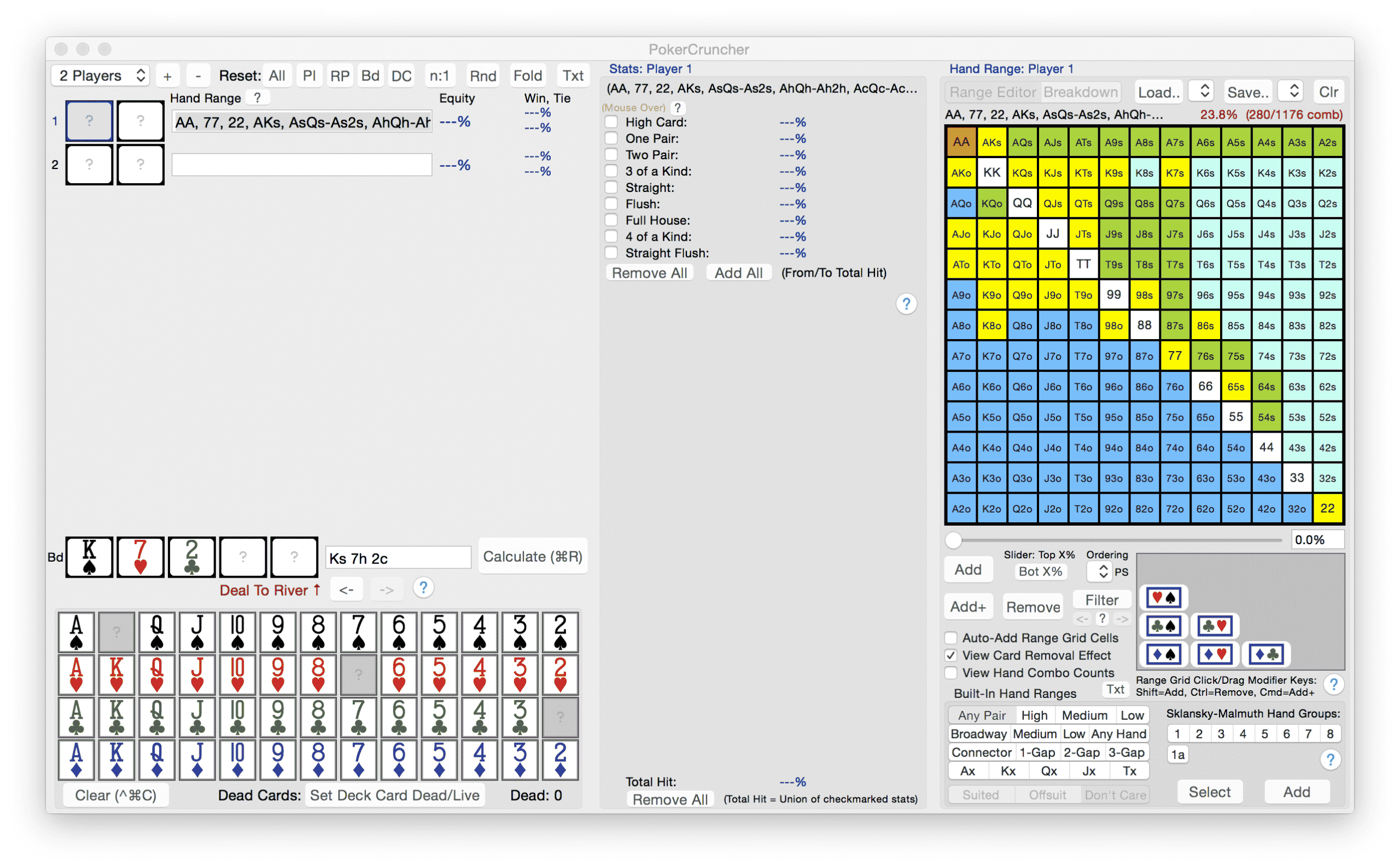
*Hero’s c-betting range
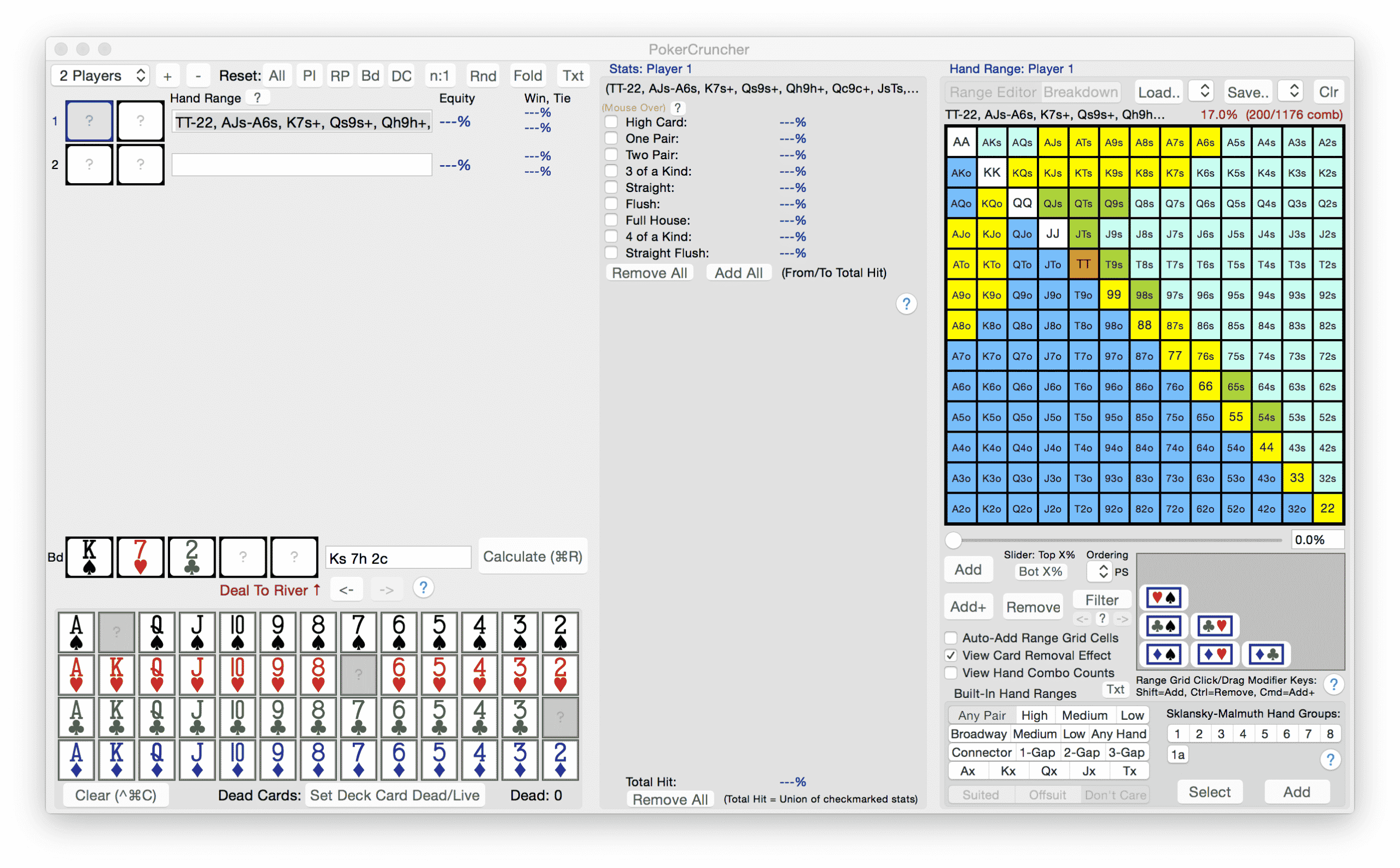
*GTO check-calling range on the flop for Villain
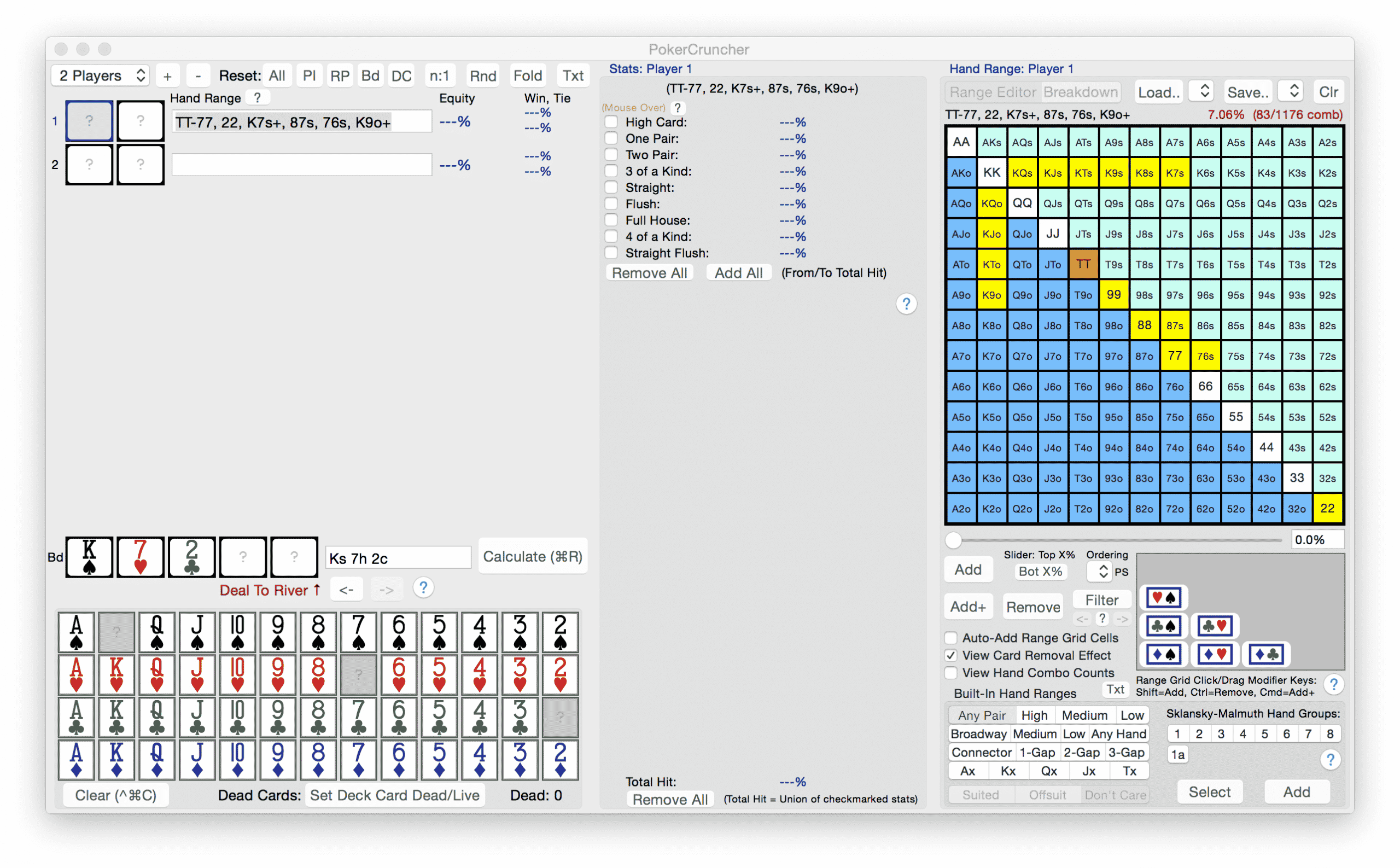
*Average check-calling range on the flop for Villain
Analysis
As you can see, Hero is opening a reasonable range of 35.1% of hands from the button as exhibited in Image #1. Villain is defending with a reasonable range of 24.6% of hands from the big blind as exhibited in Image #2. Villain is checking his entire range on this board since Hero has a range advantage. Hero is betting 2/3rds of his range as exhibited in Image #3. Villain needs to check-call with 2/3rds of his range as exhibited in Image #4. Most small stakes Villains check-call with a much tighter range as exhibited in Image #5.
Herein lies the adjustment I should have made earlier in the tournament. Villain SHOULD check-call with 200 of his 298 combos on the flop. Instead, most small stakes Villains check-call with about 83 of those 298 combos. If Villain is check-folding 72% of his range, Hero should c-bet all of his air hands on this flop. More importantly, Hero should barrel with a significantly smaller range on blank turn cards since Villain’s check-calling range is so strong. This, of course, is called the “c-bet & quit” strategy.
I had forgotten all about it since I’ve spent all of 2015 playing $1K+ tournaments and 5/10+ cash games. But it’s a very useful strategy in small stakes tournaments, especially if you widen your pre-flop opening ranges to soak up all the dead money on the flop. The funny thing is that I’m sure there were some players in the $350 event that were generating a higher return on investment than me by utilizing this strategy. But this strategy is the same reason why they can’t beat $1,500 tournaments. It falls apart against solid opposition. It’s just too far away from game theory optimal play.
Ultimately, I went out 28th of 2,906 entries. Mostly because I relied on super crisp pre-flop play and a fundamental understanding of post-flop mechanics. I’m convinced I could’ve gone deeper if I had adjusted to the weak opposition in a more extreme manner. But does it really matter? It’s just a $350 event. I’ll stick to the $5K’s. Regardless, if you’re interested in more analysis like this, head over to checkshovepoker.com and fill out the form at the bottom of the page. In the meantime, go crush some $350’s for me!


Nice article that is very informative. To be precise however the article referred to .33 as the profit point for a half pot bluff when it’s actually the break even point. Similarly .67 was referred to as the profitable calling frequency when it’s actually the break even calling frequency. I know it’s a small technical point but for the mathematically inclined it does stand out.
You start becoming profitable once you break even. Likewise, 67% is not the break-even calling % vs a 1/2xPot bet, 25% is (3:1 odds). The question though was not how often villain has to call to break even but to “prevent hero from bluffing profitably.”
Therefore, if 100% = all hands and hero only has to have a play work 33% of the time this means that even if villain plays back 67% (100 – 33 = 67) hero is still breaking-even/becoming profitable on his bluff. This means hero has to play back 67% vs hero’s bluffs to keep hero even and anything more like 68% will make hero’s bluffing unprofitable for a 1/2xPot bet.
Keep up the good work – have fun – never give up – thanks for sharing info.
Minimum defence frequencies are not GTO (partly because of range imbalances, but mostly because there are multiple streets to play, not just one), and for spots like this one, I think the ranges and frequencies provided are actually quite different from what is optimal.
For instance, the BB should have all Axs in his pre-flop defending range (often as 3-bets but with a lot of calls too), along with more Kxs. With an optimal range, the BB will fold about 40% on the flop, and he’ll have a check-raising range, despite the board being very dry. Check-calling two thirds of the time with the range posted wouldn’t be GTO. It would be retarded.